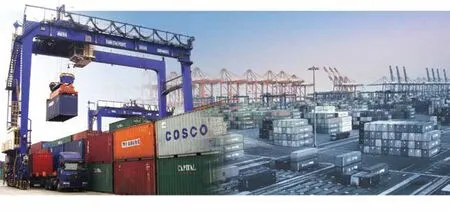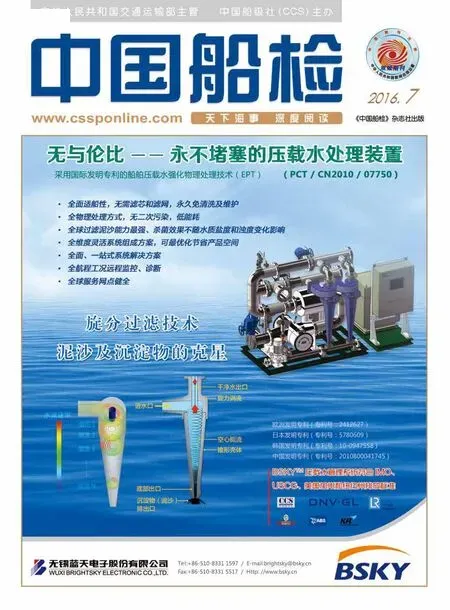Don’t Let the VGM Be A Straitjacket
Reporter Xu Hua

On June 6, 2016, the Ministry of Transport issued an official notice to make clear explanation and definition on the implementation since July 1stthe new rule of mandatory verification of the weight of cargo containers (VGM).The discussion within the industry is hot with ship owners, harbors, the cargo owners as well as freight forwarding companies on the foreign trade logistics chain all putting forward different views on the implementation of the new rule based on their respective interests.
Many research institutes composed by international wellknown shipyards, owners and owner's organization,equipment manufacturers, classification societies and government agencies have pointed out through years of research, that the reasons of the containers lost or damage mainly include: acceleration caused by fl exural deformation of the hull under inclement weather; extrusion stress caused by adjacent container stack; lack of stability caused by poor maintenance of deck fittings; incorrect bindings; belated retightening when lashing loosed during the voyage; and big difference between the actual and estimated weight of containers. And in particular, the discrepancy of container weight can cause prominent deviation in loading arrangement and loading sequence resulting in obvious acceleration during ship moving when containers piled up to a higher location, thereby forming a great test to the intensity of binding system or cause containers of whole entire space falling into the sea.
The notice issued by the Ministry highlighted that,“the consignor of containers should validate the gross weight”, and the container ships engaged in international navigation are not allowed to load containers without VGM information. It can be seen that the consignor who has an obligation to provide accurate data is considered as the gross data provider and main monitoring object. As regards this, specialists representing the shipper and forwarder generally believe that it is diff i cult and costly to get VGM data through actual weighing. What's more, the shipper and forwarder have no equipment or professional competence but to ask for help from other qualif i ed institutions which may have negative effect on the efficiency of logistics and costs. Therefore, many shippers and forwarders want the port which is equipped with weighing equipment to provide the relevant service and even hope that will be free of charge. But, under the market economy mechanism,there won't be “free lunch”. At present, major domestic harbors have released VGM validation service charge standard so as to promote weighting before entering the fi eld and the cost of weighing after entering the fi eld will be multiplied. It is really an important test to consignor on the cost management .
Discussion about container weight validation is also going on in the international sphere. Because of different management systems and logistics structure,the validation methods are not unified. Although two validation methods are provided in the convention: full container load inspection or accumulation inspection,the practice of the harbor has yet to be tested by market when logistics efficiency and regulatory effectiveness are considered. The United States has published that it accepts inspection at the port entry.As a major exporter, China is second to none in the output of export containers and its verif i cation methods, VGM,has been the concern of the countries all over the world.Just as the experts pointed out, competent transportation departments at all levels in our country put emphasis on vehicle or ship loading control, but mainly due to concern of road and bridge transportation safety. At the toll gates of highway and bridge, weighing facilities have been established to reinforce the weight limitation and management of container truck. But since July 1st,overweight was not the only focus of safety supervision,another thing is to ensure the accuracy of weight verif i cation .
Experts have pointed out that the full container load inspection is usually used for packed products while accumulation inspection is used for bulk cargo container or individual big container. At present, there are a number of agencies abroad introducing the data tools to promote digital and automated management of container weight calibration, promoting the implementation of the validation methods. With the standardization of the goods consignment, chain data links covering the entire logistics will be formed in the future. Our country should also take the opportunity of the rule requirement for container weight validation to promote the digital management of the registration of the weight of goods loaded in the container and the attributes of the goods (especially the dangerous goods), logistics, transportation tool, land and sea transportation and the delivery process, and to form effective dynamic market analysis through large data analysis so as to occupy the high point of logistics management. In one hand, It can promote the healthy development of the logistics industry, on the other hand,it can also reinforce the safety management of various logistics chains.

